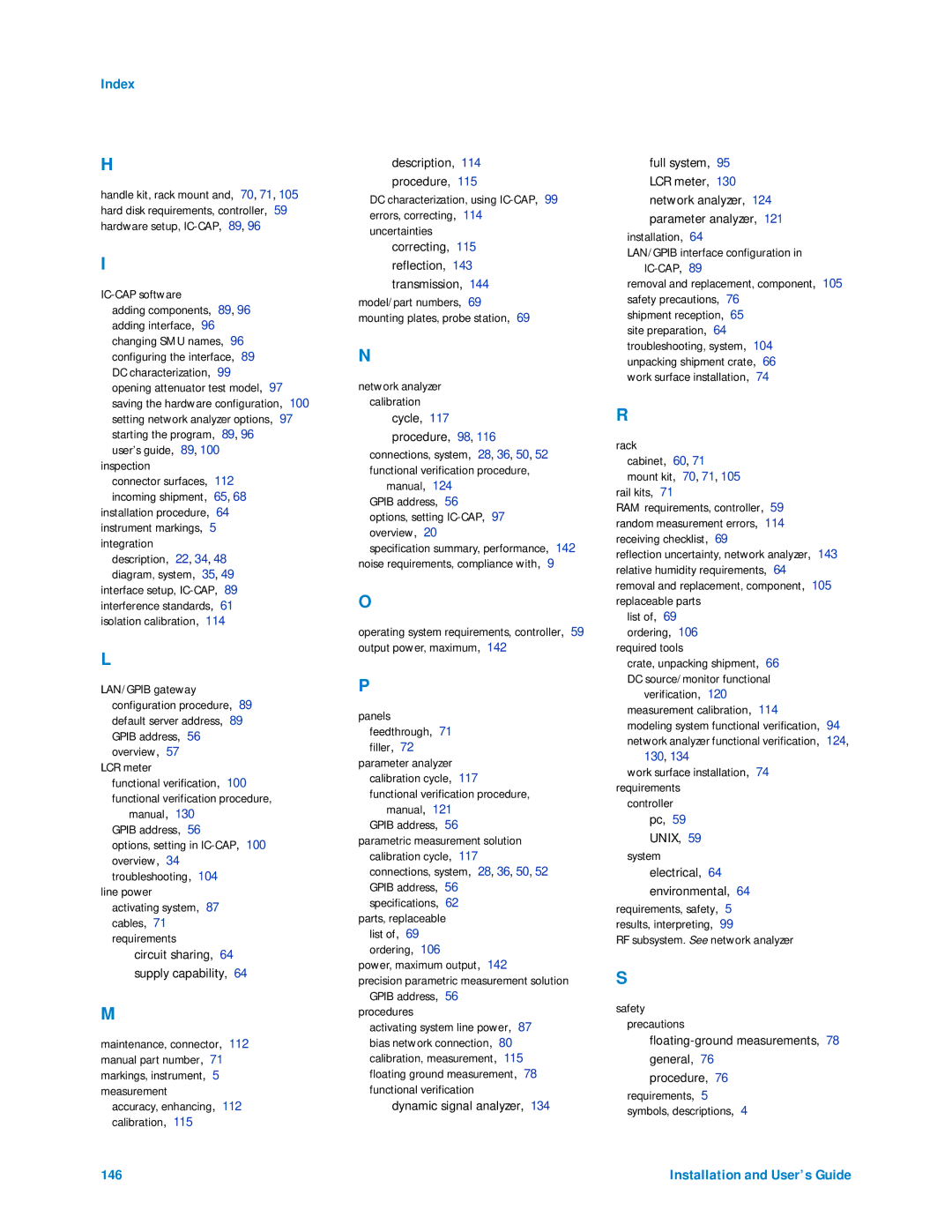85225F specifications
Agilent Technologies 85225F is a high-performance microwave signal generator designed for the most demanding test and measurement applications in the RF and microwave frequency domains. This versatile instrument is a vital tool for engineers and technicians who require precise and reliable signal generation in various fields such as telecommunications, aerospace, and electronic warfare.One of the main features of the Agilent 85225F is its frequency coverage, which spans from 0.1 to 26.5 GHz. This broad frequency range allows users to address a wide array of applications, including component testing, system verification, and radar signal simulation. With exceptional frequency resolution and accuracy, the 85225F ensures the generation of clean and stable signals tailored to specific operational requirements.
The 85225F incorporates advanced phase-locked loop (PLL) technology, which contributes to its superior frequency stability and low phase noise. This technology is crucial for applications requiring precise signal integrity and minimal jitter, such as digital communications and high-frequency circuit testing. The instrument’s low phase noise is particularly advantageous for sensitive measurements and data transmission systems where signal quality is paramount.
In addition to its impressive frequency and phase noise characteristics, the Agilent 85225F features multiple modulation capabilities, including amplitude modulation (AM), frequency modulation (FM), and pulse modulation. These modulation options enable users to simulate a wide variety of real-world signals and testing conditions, enhancing the versatility of the instrument in various testing environments.
The 85225F also offers a user-friendly interface that facilitates ease of operation. The clear LCD screen displays essential parameters and settings, allowing users to make adjustments quickly and efficiently. Furthermore, the instrument supports remote programming and automation through its GPIB or LAN connectivity options, making it suitable for integration into larger test systems.
Another notable characteristic of the Agilent 85225F is its compact design, which does not compromise on performance. This space-saving design makes it ideal for both lab and field applications, allowing engineers to transport the generator with ease, while still maintaining the ruggedness required for demanding environments.
Overall, the Agilent Technologies 85225F stands out as a robust and reliable microwave signal generator, equipped with state-of-the-art features and technologies that cater to the needs of modern RF testing. Its broad frequency coverage, advanced modulation capabilities, low phase noise, and user-friendly interface make it an essential tool for a wide range of applications in the RF and microwave sector.
